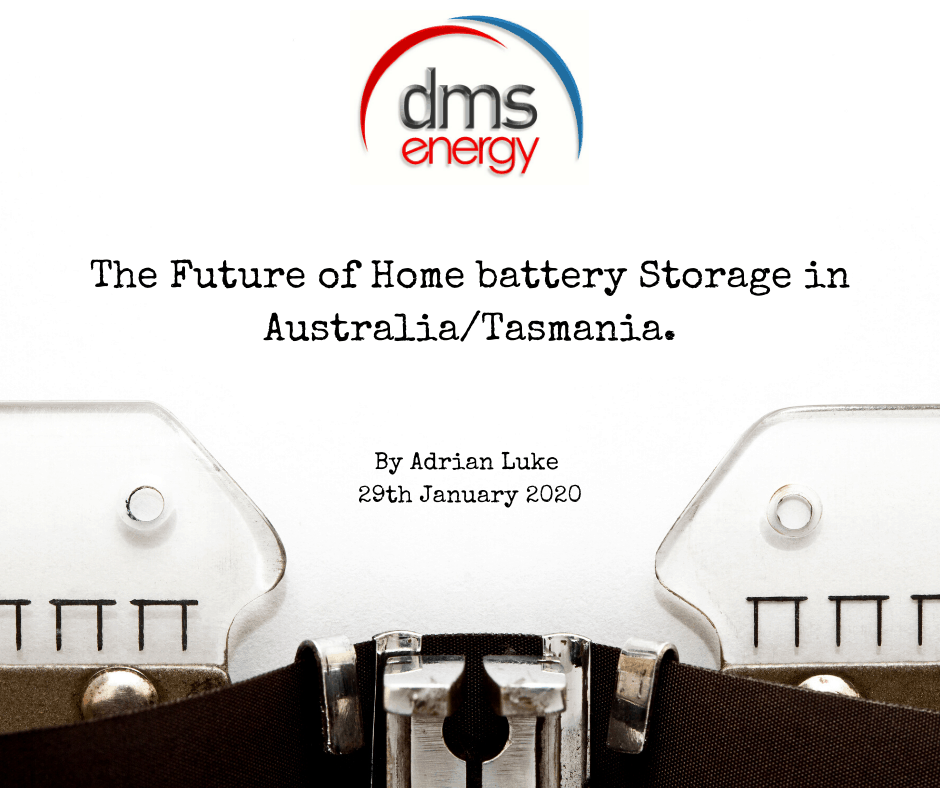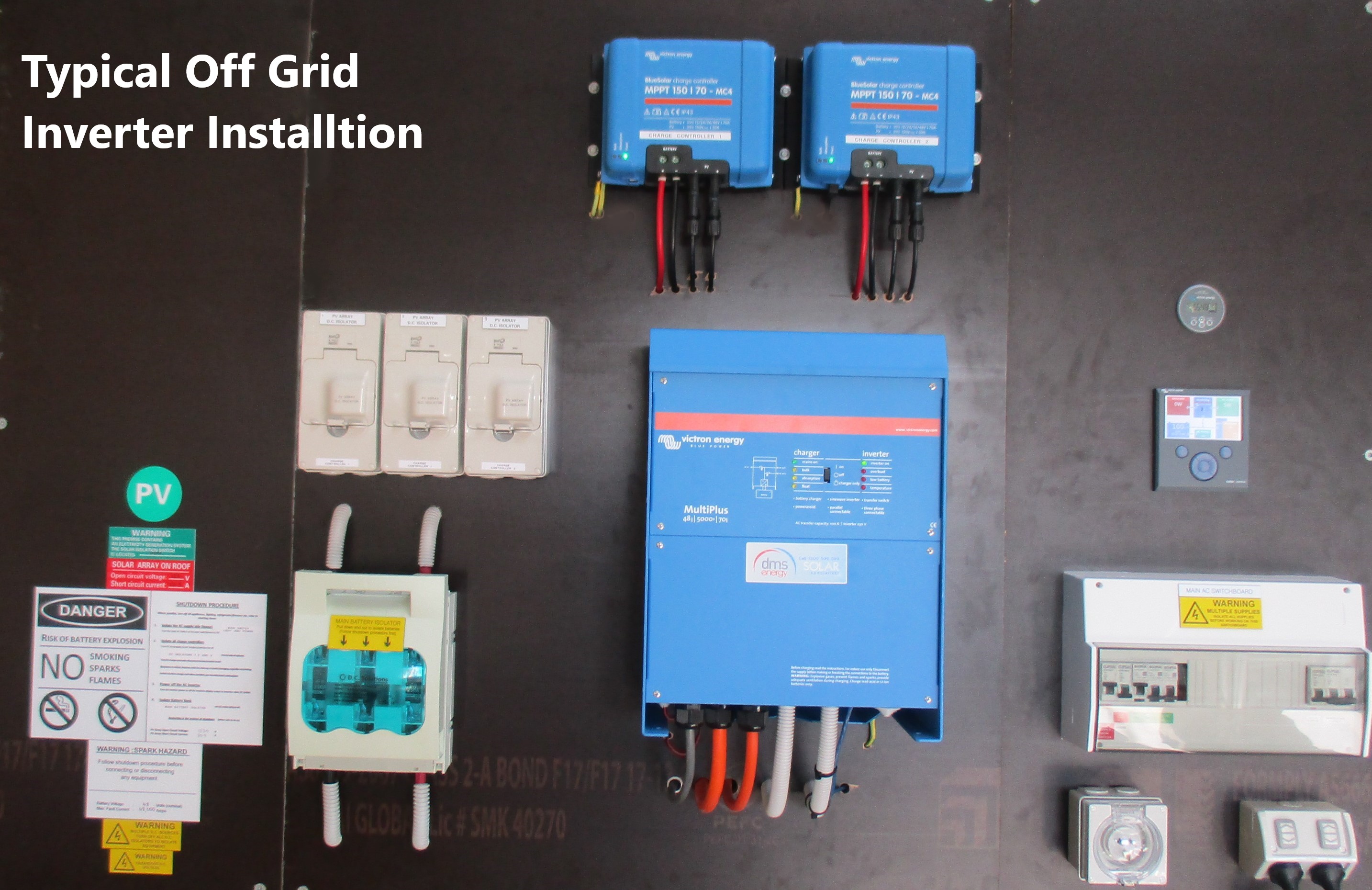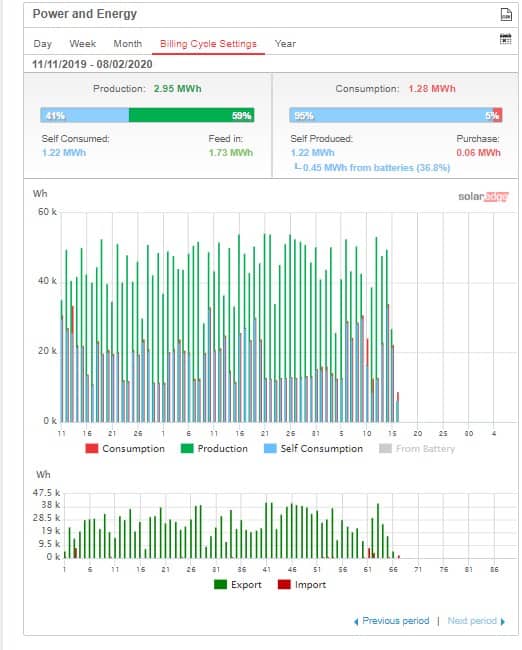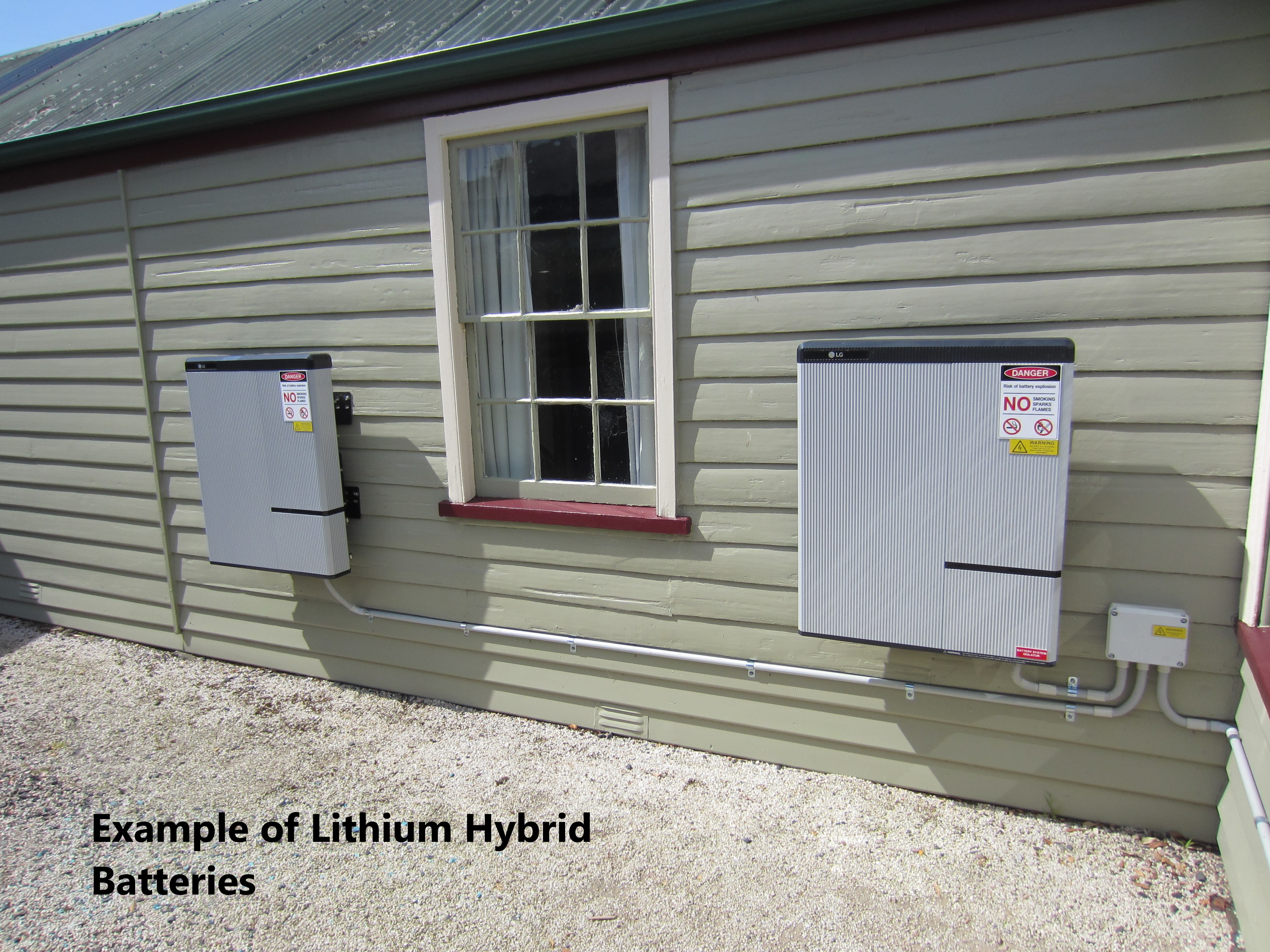Save Now, Pay Later.
With flexible payments from handypay.
Save Now, Pay Later.
With flexible payments from handypay.
Published

The Future of Home battery Storage in Australia/Tasmania.
By Adrian Luke – Director of DMS Energy
DMS Energy has been in the business of designing, supplying and installing battery systems across Tasmania for 13 years. During this time not only have we witnessed the evolution of this emerging technology and changing consumer trends we have been actively involved in all facets of its physical implementation to a growing customer base.
Evolution of battery storage rollout in Tasmania.
Whilst we will be fundamentally talking about Tasmanian battery experiences these insights and observations can be seen reflected in other states.
For many years (2007 to 2012) the primary driver for solar with battery storage was people requiring reliable energy where there was none available. The escalating costs to run power line infrastructure to more remote areas began to justify the costs of exorbitantly expensive solar and battery products. Over the last few years networks have tried to price themselves out of the market of supplying remote areas due to the additional capital and maintenance costs unlikely ever to be recouped by a few low volume users at the end of the out of the way transmission infrastructure. Looking back to our original off grid systems these were comprised of smaller solar arrays and large storage capacity battery storage. This design profile was driven by the excessive cost of solar modules which were in the vicinity of $4 to $5 per watt for what we would consider today as low efficiency solar modules (between 160 and 180 watt). They were of relatively high quality though as there was no pricing pressure to cut corners as this was to come later.
Large battery banks, usually flooded lead acid with some stonking great PWM charge controller and toroidal transformer inverter attached to half a dozen dearer than poison solar modules with a capacity of less than 1kW.
These days solar modules can be obtained in 270 watt for a retail price of around 50 cents per watt. Yes these will be of reasonably poor quality and have no chance of lasting the 25 years which is the considered and expected lifespan of a solar panel. Whilst the best performing cutting edge technology and well built panels with actual warranties can be sourced easily these days for around 90 cents per watt and these will be 350 watt and above. Still a mile away from the heady days of the $5 per watt days for very basic modules. (prices mentioned are before any rebates)
This availability of cheap photovoltaics has changed the design profile for off grid battery systems forever. With this new abundance of generation capacity,we can use smaller battery banks with much bigger solar arrays designers can virtually guarantee a battery can recover its overnight discharges during the day except for the very worst of weather conditions. Batteries and inverters have also fell in price, whilst nowhere near to the level of solar panels, these price drops have also changed the capital cost versus return ratio in the favour of choosing solar and battery storage. It only takes the cost of running a couple of poles now to make clients seriously considering investing in a quality off grid system. There is always some chagrin to have to pay ten of thousands of dollars to be connected to a grid that’s only going to bill you every 90 days in perpetuity. Also these more remote blocks are always the first to lose power during weather and fire events and the last to get it back so there is a real availability of power issue usually when users need it the most.
Off grid for new builds, especially with an expanding surburbia now further away from major infrastructure makes generating and storing your own energy more viable than ever before. The products available now are so automated in design they require virtually little to nil client intervention in its day to day operation.

The 2nd Wave of Battery Storage
What we are discussing here are grid connected solar systems which now have battery storage attached. These are sites that have abundant access to reasonably priced power available from the grid. These homes historically had solar systems directly connected to the home and the grid with no storage capacity. These solar systems have the capacity to run the home during the day with any energy shortfalls supplied by the grid and any excesses sold to the grid all of which resulted in dramatically lower power bills for a relatively low capital cost. Quality products in this genre virtually guaranteed a positive financial outcome for clients over a long time period though the nature of the products operation meant as soon as the sun went down the solar couldn’t contribute to the homes energy loads. Also with solar feed in tariffs (payment for excess energy sold to the grid) falling to more realistic and socially sustainable and acceptable levels.This meant excess energy didn’t rack up the buffers on power bills in the form of credits as they did in the early days when solar was excessively priced and technology was to be blunt archaic. There is a desire by most with solar to climb further up that self sufficiency rainbow and to be able to store their energy for their own usage out of solar hours and have emergency back up during power outage has lead to a slow but growing uptake of battery storage devices for grid connected solar systems.
The Elephant in the Room.
While the grid connected solar/storage technologies work and integrate into our lives very well there is a problem with one of the drivers of this technology and that is the desire to save money. As previously mentioned, the majority of our off grid customers could see a value proposition in avoiding painfully high connection costs, followed by quarterly billing and availability issues during weather events.
The same motivations are not so crystal clear for on grid customers. They have power, they can have

relative low cost solar with no battery storage, they still want to save money but can on-grid battery storage achieve these goals. Short answer is no. The capital cost versus savings and estimated life span of the product means the absolute best case scenario is the battery product may pay itself pay for itself before you have to replace the product. Does this cold hard truth impact on sales? Yes but not as hard as you would think. We have many walk into our showroom with the expectation adding battery storage will save them thousands of dollars and we have to realign their expectations to one of the reality there isn’t such savings to be found (anyone who tells you otherwise is lying and should be immediately discounted as a fraud).
So who is buying batteries? These largely fall into 3 groups. The biggest and most prevalent is those not far from or not long retired. They are going onto a fixed income from a superannuation or however they intend to fund their twilight years. With crashing interest rates and turbulent world events having the possibility of negatively effecting their income they see the ability of being able to generate, store and use their own energy as away to provide a safety net in case it all goes pear shaped. There is no denying a well-designed and implemented grid connected solar and battery storage system does eventuate in stupidly low to no power bills though the economics indicate you are largely paying them in advance. It also is an effective insulator against rising power prices as well as against the back of potentially falling superannuation returns.
The next group are people who are on grid but are reasonably remote so they are the first to lose the power and last to get it back.They are looking at using their excess energy on a daily basis but having the emergency back up capability for those periods the grid lets them down. Many of these more rural clients rely on pressure pumps and cannot even flush their toilet during an outage or keep food cold or frozen. Their primary driver is convenience.
The third and final group are what we call early adopters for no other reason than that it exists, its cool, they want to take it the man, not chasing a financial return. Their primary driver is they just want it.
What will change in the future?
Prices of these products will continual to fall though not in the dramatic way we have seen in the past. It will be slow process as technology tries to lower prices in an environment where demand is out stripping supply. Though on the back of this we see a continual rise in the cost of centralised grid power. The stupidity of governments and networks continually building dumb networks not able to easily integrate decentralise micro embedded power gene
ration power sources will be one of the largest drivers over the next decade as the tipping balance of no ROI as opposed to some ROI isn’t that far away. So it’s coming. Solar and storage will be the norm for domestic and eventually commercial application just the timeline is largely unknown.
Climate Change?

Something we have learnt looking back at the devastating continent-wide fires of 2019-20 is the stories where battery storage kept homes energised during periods of extreme emergency. Not just remote homes but homes in towns and city suburbs that lost essential services virtually straight away as they were threatened by these unprecedented fire events. With global and national utter inaction over last couple of decades of warnings only guarantees these events will increase in magnitude and occur at shorter intervals between events. This is a new paradigm in the consideration of the value of solar power with battery storage. How much this requirement will enter the zeitgeist of the purchaser of these products is yet to play out but is a consideration and one to be taken seriously.
DMS Energy is Tasmania’s premier designer/supplier of off grid, on grid, solar pumps and energy efficiency strategies for domestic, commercial and rural applications.
DMS Energy strives to Honestly, Ethically and Accurately assist Tasmanians to meet their energy reduction goals.
DMS Energy have advised countless locals on the right energy solutions for their home’s and business’s.




DMS Energy are not your typical energy efficiency salesmen! We are long time locals offering expert advice on solutions that are tailored to your individual needs. Talk to one of our experts today.